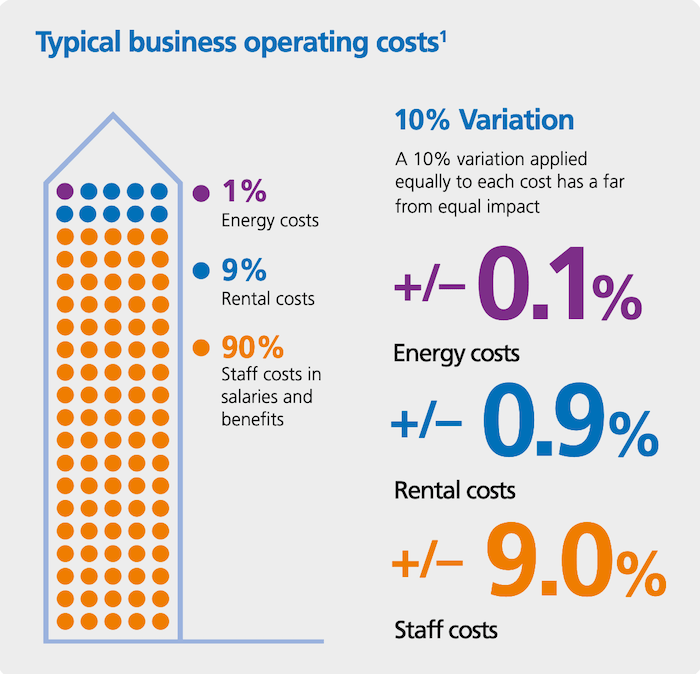Everyone talks about energy cost savings today. This is a good focus and we should have that in mind. But isn't it also important to add the non-energy benefits such as gain in health and productivity increase in this calculation?

The Role of Buildings in Global Carbon Emissions
Buildings are responsible for 39% of global energy-related carbon emissions, with 28% of that used to heat, power, and cool the buildings during the “in-use” phase. Energy efficiency in buildings is crucial to reducing carbon emissions and mitigating climate change.
The Importance of Healthy Buildings
While energy savings are essential, there is growing recognition of the benefits of healthy buildings that focus on people’s well-being. Investing in people-oriented, healthy buildings offers economic and health benefits, contributing to a better work and living environment.
The WELL Building Standard
The WELL Building Institute’s WELL Building Standard aims to improve human health and well-being through the built environment. Based on extensive research, the standard helps users implement and measure features that enhance indoor environments, promoting overall health.
The "Healthy Buildings" Initiative
PNN Lab, a US national research lab, has launched the "Healthy Buildings Initiative," which aims to improve non-energy benefits to building occupants and the broader economy. Studies have shown that factors such as lighting, comfort, and air quality affect circadian rhythms, cognitive function, stress levels, and mood. However, this knowledge has not been fully utilized in the building energy sector.
Case Study: Energy + Health Benefits
PNN Lab’s case study demonstrates a remarkable benefits/cost ratio: 0.3 for energy and 14.8 for the combined impact of energy and health. This shows that focusing on both energy efficiency and occupant health yields substantial long-term benefits.
In a case study from PNN Lab it was shown that benefits / cost ratio was 0.3 regarding Energy and 14.8 regarding Energy + Health.

Source and image courtesy: PNN Lab
The Economic Benefits of Investing in Employee Health and Well-being
From the same case study it is shown that companies, on average, spend $3 in utilities, $30 in rent and $300 in payroll per square foot per year. The ratio between dollar spent in these categories was already show in 2014 in World Green Building Council’s report on “Health, Wellbeing and Productivity in offices “. A business split on typical operational costs are seen in the image below. A small change in personnel’s health and wellbeing can have a significant impact on the financial savings. So, a win-win situation.

Source and image courtesy: World Green Building Council
To put effort in healthy buildings which are people oriented looks like it is equivalent with a better future. Let’s expand our thinking when doing our ROI.
Spreading natural sunlight in the building
Parans lead sunlight deep into buildings and far away from windows. With the use of highly intelligent technology, we make sunlight an indoor experience. As common as it is to have windows along the facade and that way bring in the natural light, as common it could be to have daylight via a Parans system deeper in into the building.
Illuminate Your Space
Ready to brighten your space with natural light? Parans solar lighting system harnesses the sun’s power to transform indoor environments sustainably. With advanced fiber optic lighting, we deliver sunlight deep into buildings, enhancing well-being and cutting energy costs.
Get Started Today
Whether it’s homes, offices, or unique projects, our innovative solutions offer eco-friendly brilliance. Explore how fiber optic lighting can elevate your next design—visit our products or contact us at sales@paranslight.com for a personalized quote today! Let’s illuminate your world, naturally.
